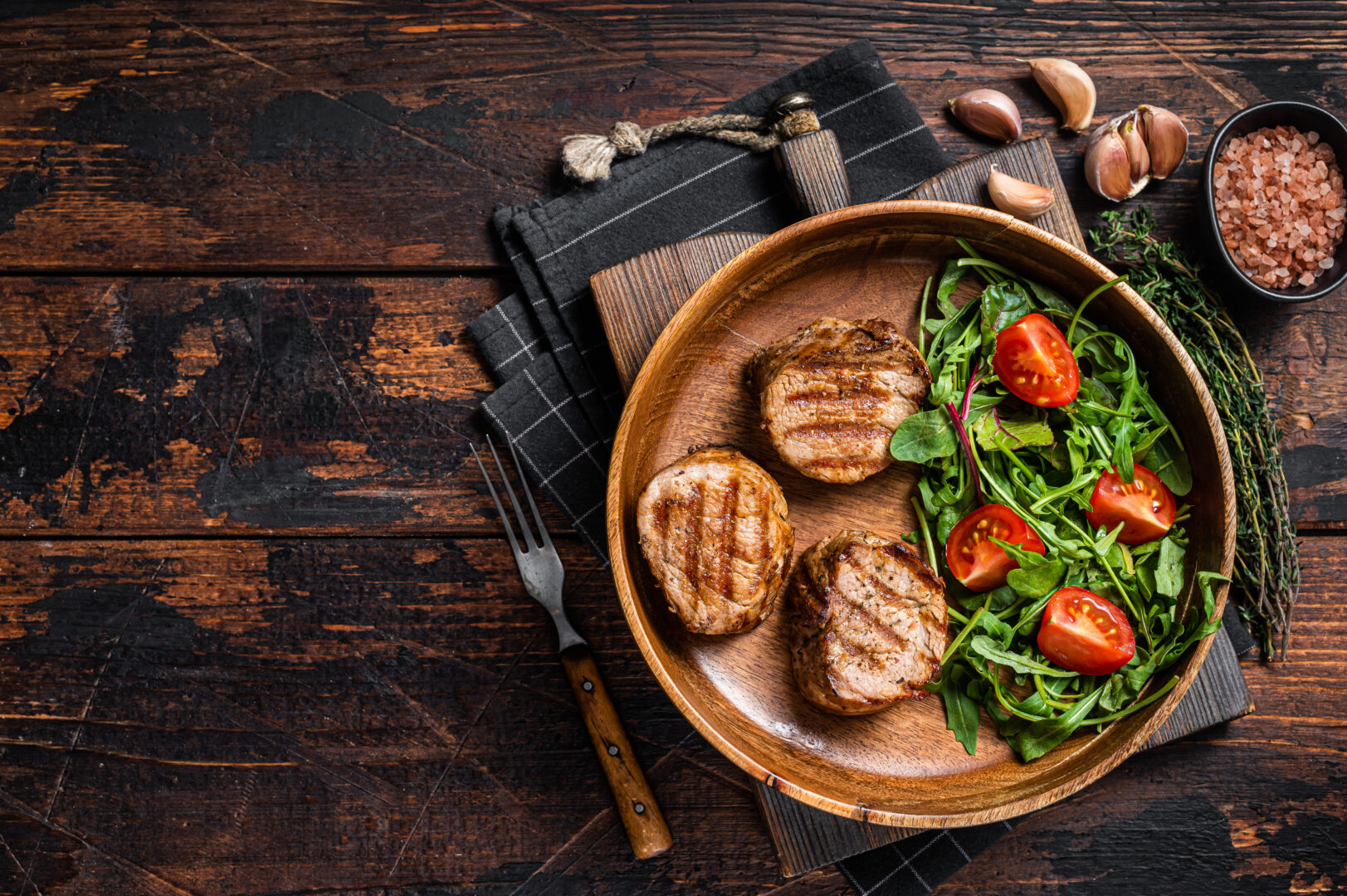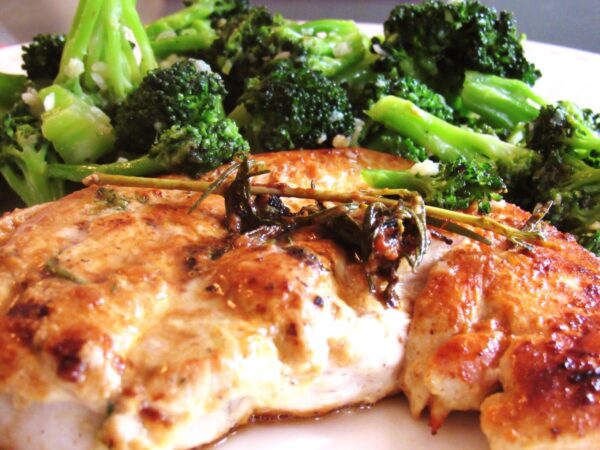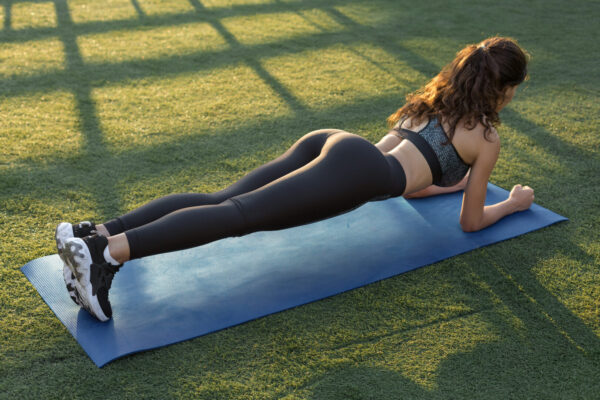1700-Calorie Meal Plan: a High-Protein Diet for Muscle Building & Fat Loss

Looking to build muscle while maintaining a balanced diet? A 1700-calorie high-protein meal plan could be your perfect solution. This approach combines the science of calorie control with optimal protein intake to help you reach your fitness goals while staying satisfied throughout the day!
Whether you’re aiming to shed pounds or maintain your current weight, this nutrition strategy delivers the perfect balance of nutrients your body needs. With an emphasis on quality protein sources, you’ll get approximately 130-164 grams of protein daily, along with a healthy mix of carbs and fats. It’s an approach that supports muscle strength and improves satiety and overall health performance.
Key Takeaways
- A 1700-calorie high-protein diet provides 130-164 grams of protein daily (30-35% of total calories), supporting both muscle maintenance and gradual weight loss of 1-2 pounds per week.
- The daily calories are distributed across breakfast (425 kcal), lunch (510 kcal), dinner (510 kcal), and snacks (255 kcal), with meals spaced 3-4 hours apart for optimal energy levels.
- This calorie level creates an effective deficit for most adults, particularly active women 5’2″-5’7″ and sedentary to lightly active men 5’7″-6’0″.
- The meal plan combines lean proteins, complex carbs, and healthy fats while emphasizing portion control and regular protein intake throughout the day.
- For muscle building and fat loss, pair this diet with resistance training 3-4 times weekly and ensure adequate protein distribution across meals.
- If you notice disturbing signs in your health, like constant fatigue, rapid or no weight loss, or anything else that you feel to be abnormal, consult a certified doctor for support and further guidance.
What Is a 1700-Calorie Diet?
A 1700-calorie diet provides a moderate energy intake that supports weight management for individuals with moderate activity levels. This eating pattern creates a caloric deficit of 500-750 calories per day, resulting in 1-2 pounds of weight loss per week when combined with regular exercise.
The daily caloric distribution usually follows this pattern:
| Meal | Calories | Percentage |
| Breakfast | 425 | 25% |
| Lunch | 510 | 30% |
| Dinner | 510 | 30% |
| Snacks | 255 | 15% |
For a high-protein version, the macronutrient breakdown includes:
- Protein: 130-164g (30-35% of total calories).
- Carbohydrates: 170-212g (40-50% of total calories).
- Fats: 47-56g (25-30% of total calories).
This caloric intake works best for:
- Active adults maintaining weight.
- Sedentary adults seeking gradual weight loss.
- Women with moderate exercise routines.
- Individuals transitioning from higher-calorie diets.
The meal timing includes three main meals plus two snacks, spaced 3-4 hours apart to maintain stable energy levels throughout the day.
Can I Lose Weight Eating 1700 Calories a Day?
It’s still a low-calorie diet that creates an effective caloric deficit for weight loss, especially when combined with regular physical activity. Research shows people who consume 1700 calories daily experience consistent weight reduction, according to the Dietary Guidelines for Americans.
The high-protein composition of this meal plan enhances weight loss through three key mechanisms:
- Increases metabolic rate by burning 80-100 extra calories daily through digestion.
- Reduces appetite by promoting satiety hormones.
- Preserves lean muscle mass during caloric restriction.
| Weight Loss Factors | Impact |
| Expected Weekly Loss | 1-2 pounds |
| Daily Caloric Deficit | 500-750 calories |
| Protein Thermogenic Effect | 80-100 calories burned |
| Recommended Activity Level | Moderate |
The 1700-calorie target proves sustainable for long-term adherence compared to more restrictive diets. Research published in The American Journal of Clinical Nutrition confirms that high-protein, calorie-controlled diets increase weight loss success rates by 27% versus standard protein diets.
Your results will still depend on many factors:
- Starting weight
- Activity level
- Muscle mass percentage
- Consistency with the meal plan
- Quality of food choices
- Sleep patterns
- Stress management
Is 1700 Still a Calorie Deficit?
A 1700-calorie diet creates a deficit for most adults based on their total daily energy expenditure (TDEE). Here’s a breakdown of when 1700 calories represent a deficit:
For Women:
- Height: 5’2″ – 5’7″
- Weight: 130-165 pounds
- Age: 25-45
- Activity: Light to moderate
- TDEE: 1900-2200 calories
For Men:
- Height: 5’7″ – 6’0″
- Weight: 150-185 pounds
- Age: 25-45
- Activity: Sedentary to light
- TDEE: 2100-2400 calories
| Activity Level | Calorie Deficit | Weekly Weight Loss |
| Sedentary | 300-400 | 0.6-0.8 lbs |
| Lightly Active | 400-500 | 0.8-1.0 lbs |
| Moderately Active | 500-700 | 1.0-1.4 lbs |
The deficit depends on these key factors:
- Basal metabolic rate (BMR)
- Daily physical activity level
- Exercise intensity frequency
- Muscle mass percentage
- Hormonal balance
- Sleep quality
- Stress levels
A 1700-calorie intake becomes a maintenance level for:
- Petite women under 5’2″
- Sedentary individuals
- Adults over 65
- Those with slower metabolisms
- People recovering from extreme dieting
HeyFit tip: Calculate your specific deficit by tracking your weight changes over 14 days while maintaining a consistent 1700 daily calories.
Is 1700 Calories Enough to Build Muscle and Lose Fat?
A 1700-calorie high-protein diet supports muscle growth during a moderate caloric deficit when combined with resistance training. Research published in The American Journal of Clinical Nutrition confirms that high-protein diets enhance muscle preservation while promoting fat loss.
Protein Requirements
| Activity Level | Daily Protein Needs |
| Moderate Exercise | 0.8-1.0g/lb body weight |
| Strength Training | 1.0-1.2g/lb body weight |
| Intense Training | 1.2-1.4g/lb body weight |
Muscle Building Potential
This caloric intake supports muscle growth for:
- Female athletes under 130 pounds.
- Male athletes under 150 pounds.
- Individuals in the early stages of training.
- People with slower metabolisms.
Fat Loss Expectations
The plan creates a sustainable deficit:
- Burns 1-2 pounds of fat weekly.
- Maintains existing muscle mass.
- Increases metabolic rate.
- Reduces appetite through protein satiety.
Activity Modifications
Adjust your training to maximize results:
- Perform resistance exercises 3-4 times weekly.
- Include compound movements.
- Space meals 3-4 hours apart.
- Time protein intake around workouts.
What Are the Pros and Cons of a 1700-Calorie Diet Plan?
A 1700-calorie high-protein diet offers specific advantages and limitations for weight management and overall health. Here’s a detailed analysis of the benefits and drawbacks.
Healthy Weight Loss
The 1700-calorie intake creates a moderate caloric deficit, resulting in 1-2 pounds of weight loss per week when combined with regular exercise. This rate aligns with recommended healthy weight loss guidelines from nutritional experts.
Comprise Healthy Meals
The meal plan incorporates essential nutrients through whole foods like:
- Lean proteins (fish, legumes, yogurt)
- Healthy fats (avocados, olive oil, nuts)
- Complex carbohydrates (whole grains, quinoa)
- Fiber-rich vegetables (leafy greens, broccoli)
Customizability
The plan adapts to various dietary preferences through:
- Flexible meal timing options
- Interchangeable protein sources
- Adjustable portion sizes
- Multiple food combinations
Moderate Caloric Intake
This calorie level provides:
| Benefit | Amount |
| Daily Protein | 130-164g |
| Carbohydrates | 170-213g |
| Healthy Fats | 47-57g |
Gradual Results
The steady pace of weight loss supports:
- Sustainable fat reduction
- Consistent energy levels
- Reduced risk of rebound weight gain
- Better adherence to the plan
Risk of Muscle Loss
Potential challenges include:
- Inadequate protein timing
- Reduced workout performance
- Decreased strength gains
- Limited muscle recovery
Individual Variability
Results vary based on:
- Starting weight
- Activity level
- Metabolic rate
- Age factors
- Hormonal influences
Monotonous Eating Routine
- Restricted food choices
- Repetitive meal patterns
- Limited dining flexibility
- Measured portions
What Can I Eat for 1700 Calories: Your Sample Meal Plan
A 1700-calorie high-protein meal plan incorporates diverse nutrient-dense foods distributed across seven days. Each day’s menu provides balanced macronutrients while maintaining the protein focus.
Monday
- Breakfast (425 cal): 1 cup Greek yogurt + 1 scoop whey protein + ¾ cup berries + ¼ cup granola
- Lunch (510 cal): 5 oz grilled chicken breast + 1 cup quinoa + 2 cups mixed greens + 1 tbsp olive oil
- Dinner (510 cal): 6 oz baked salmon + 1 cup brown rice + 1 cup roasted broccoli
- Snacks (255 cal): 1 protein bar + 1 medium apple
Tuesday
- Breakfast (425 cal): 3 egg whites + 1 whole egg + 2 slices Ezekiel bread + 1 cup of spinach
- Lunch (510 cal): 5 oz lean turkey + 2 cups mixed vegetables + ½ avocado + 1 cup sweet potato
- Dinner (510 cal): 6 oz lean beef + 1 cup cauliflower rice + 1 cup green beans
- Snacks (255 cal): 1 cup cottage cheese + ½ cup pineapple
Wednesday
- Breakfast (425 cal): Protein smoothie: 1 scoop whey + 1 banana + 1 cup almond milk + 1 tbsp peanut butter
- Lunch (510 cal): 5 oz tuna + 1 cup chickpeas + 2 cups romaine + 1 tbsp light dressing
- Dinner (510 cal): 6 oz chicken thighs + 1 cup quinoa + 1 cup zucchini
- Snacks (255 cal): 2 oz turkey + 1 oz cheese + 4 whole grain crackers
Thursday
- Breakfast (425 cal): 1 cup oatmeal + 1 scoop protein powder + 1 tbsp almond butter + ½ cup blueberries
- Lunch (510 cal): 5 oz shrimp + 1 cup brown rice + 2 cups mixed vegetables
- Dinner (510 cal): 6 oz cod + 1 medium sweet potato + 1 cup asparagus
- Snacks (255 cal): Greek yogurt parfait with ¼ cup granola
Friday
- Breakfast (425 cal): Protein pancakes: 1 scoop protein + ½ cup oats + 1 egg white + ½ banana
- Lunch (510 cal): 5 oz chicken breast + 1 cup black beans + 1 cup brown rice
- Dinner (510 cal): 6 oz tilapia + 1 cup quinoa + 1 cup Brussels sprouts
- Snacks (255 cal): 1 oz almonds + 1 string cheese
Saturday
- Breakfast (425 cal): 3 egg whites + 1 whole egg + ½ cup oatmeal + 1 cup berries
- Lunch (510 cal): 5 oz lean beef + 1 cup sweet potato + 2 cups mixed greens
- Dinner (510 cal): 6 oz turkey breast + 1 cup brown rice + 1 cup broccoli
- Snacks (255 cal): Protein smoothie: 1 scoop whey + 1 cup almond milk
Sunday
- Breakfast (425 cal): 1 cup cottage cheese + 1 scoop protein powder + ¾ cup mixed berries
- Lunch (510 cal): 5 oz salmon + 1 cup quinoa + 2 cups spinach salad
- Dinner (510 cal): 6 oz chicken breast + 1 cup sweet potato + 1 cup green beans
- Snacks (255 cal): 2 hard-boiled eggs + 1 medium apple
What does a 1700 Calorie Day Look Like?
A 1700-calorie high-protein day splits into three main meals plus two snacks, providing optimal nutrition timing throughout your day.
Breakfast (425 calories)
- 1 cup Greek yogurt (0% fat) with 1 scoop whey protein powder
- ¾ cup rolled oats topped with 1 tablespoon almonds
- 1 medium banana
- Black coffee or unsweetened tea
Lunch (510 calories)
- 5 oz grilled chicken breast
- 1 cup quinoa
- 2 cups mixed green salad
- 1 tablespoon olive oil dressing
- 1 medium apple
Afternoon Snack (125 calories)
- 1 string cheese stick
- 4 oz baby carrots
- 2 tablespoons hummus
Dinner (510 calories)
- 5 oz baked salmon
- 1 cup brown rice
- 1½ cups roasted broccoli
- 1 teaspoon olive oil for cooking
Evening Snack (130 calories)
- 1 cup cottage cheese (1% fat)
- ½ cup mixed berries
| Meal Timing | Calories | Protein (g) | Carbs (g) | Fat (g) |
| Breakfast | 425 | 35 | 45 | 12 |
| Lunch | 510 | 40 | 55 | 15 |
| Dinner | 510 | 40 | 50 | 17 |
| Snacks | 255 | 25 | 25 | 10 |
| Daily Total | 1700 | 140 | 175 | 54 |
The meal spacing maintains steady energy levels with protein-rich foods on each eating occasion. This distribution supports muscle maintenance while creating a modest caloric deficit for fat loss goals.
Tips on Following the 1700-Calorie Diet
A 1700-calorie high-protein diet requires strategic meal planning and portion control to maximize nutritional benefits. These practical tips help structure your daily meals while maintaining the caloric target.
Have a Fulfilling Breakfast
- Start your day with a 425-calorie protein-rich breakfast that combines complex carbohydrates and protein.
- Include Greek yogurt (22g protein per cup), fresh fruits, low-fat milk (8g protein per cup), and whole-grain toasts.
- Space your breakfast 3-4 hours before your next meal to maintain stable blood sugar levels throughout the morning.
Follow the Plate Method for Weight Loss
- Fill half your plate with non-starchy vegetables like kale, broccoli, and spinach.
- Divide the remaining half between lean protein (25% of the plate) and whole grains (25% of the plate).
Your typical lunch plate should include:
| Portion | Food Group | Calories |
| 1/2 plate | Vegetables | 50-75 |
| 1/4 plate | Protein | 150-200 |
| 1/4 plate | Whole grains | 150-175 |
Healthy Snack Ideas
Choose protein-rich snacks between meals to maintain energy levels and control hunger. Pack these portable options:
- 1 cup edamame in pods (100 calories, 8g protein)
- 22 almonds (170 calories, 6g protein)
- 1 medium apple with 1 tablespoon peanut butter (200 calories, 7g protein)
- 1 cup Greek yogurt with ¼ cup berries (181 calories, 18g protein)
Protein-Rich Foods Checklist
| Food Item | Serving Size | Protein (g) |
| Greek yogurt | 1 cup | 22 |
| White beans | ½ cup | 8 |
| Kefir | 1 cup | 9 |
| Tofu | ½ cup | 10 |
| Edamame | ½ cup | 8 |
| Almonds | 1 oz (22) | 6 |
The Importance of Self Check-Ins
Starting a 1700-calorie high-protein meal plan is just the beginning of your fitness journey. You’ll need to listen to your body and make adjustments as needed to ensure you’re getting the results you want.
Monitor your energy levels, strength gains, and hunger cues. If you feel consistently tired or your workouts are suffering, it might be time to adjust your caloric intake. Remember that everyone’s body responds differently, and what works for others might not work for you.
Stay committed to your goals but be flexible with your approach. With the right mindset and consistent effort, this meal plan can help you build lean muscle, optimize your body composition, and maintain sustainable results for the long term.
FAQ
Is a 1700-calorie high-protein diet suitable for muscle building?
Yes, a 1700-calorie high-protein diet can support muscle building when combined with resistance training. Research shows that consuming 0.8-1.2 g of protein per pound of body weight, along with proper strength training, can promote muscle growth even in a moderate caloric deficit.
How much protein should I consume on a 1700-calorie meal plan for weight loss?
On a 1700-calorie diet meal plan, aim for 130-164 grams of protein daily, which is approximately 30-35% of total calories. This amount supports muscle maintenance and growth while promoting satiety and metabolic health.
How much weight can I lose on a 1700-calorie diet?
When following a 1700-calorie diet consistently, you can expect to lose 1-2 pounds per week, depending on your starting weight and activity level. This creates a moderate caloric deficit that supports sustainable weight loss while preserving muscle mass.
How should I distribute meals throughout the day?
Split your 1700 calories into three main meals and two snacks: 425 calories for breakfast, 510 for lunch, 510 for dinner, and 255 for snacks. Space meals 3-4 hours apart to maintain stable energy levels throughout the day.
Who is this diet best suited for?
This diet is ideal for active adults maintaining weight, sedentary adults seeking gradual weight loss, women with moderate exercise routines, and those transitioning from higher-calorie diets. It’s particularly suitable for women 5’2″ to 5’7″ and men 5’7″ to 6’0″.
How can I maximize results on this diet?
Perform resistance training 3-4 times weekly, focusing on compound movements. Time your protein intake around workouts, maintain consistent meal timing, and ensure adequate sleep. Monitor progress over 2-3 weeks and adjust calories if needed.
What is the recommended macronutrient breakdown?
The optimal macronutrient distribution is 30-35% protein (130-150g), 40-50% carbohydrates (170-213g), and 25-30% fats (47-57g). This balance supports muscle growth, energy levels, and overall health.
How often should I exercise while on this diet?
Aim for 3-4 resistance training sessions per week, incorporating compound exercises. Include moderate cardio for overall health, but prioritize strength training to maintain muscle mass during the caloric deficit.






